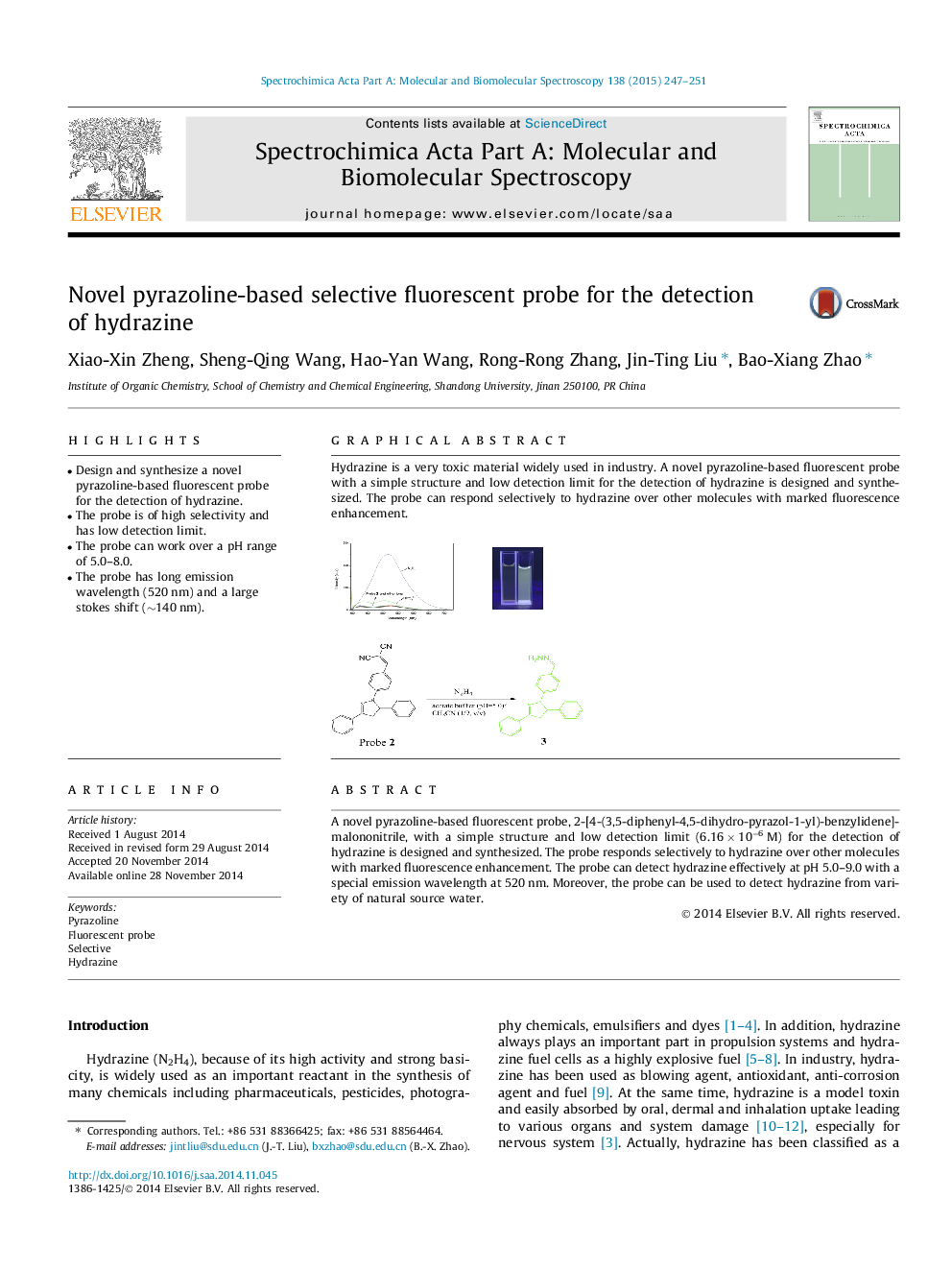| Article ID | Journal | Published Year | Pages | File Type |
|---|---|---|---|---|
| 1229060 | Spectrochimica Acta Part A: Molecular and Biomolecular Spectroscopy | 2015 | 5 Pages |
•Design and synthesize a novel pyrazoline-based fluorescent probe for the detection of hydrazine.•The probe is of high selectivity and has low detection limit.•The probe can work over a pH range of 5.0–8.0.•The probe has long emission wavelength (520 nm) and a large stokes shift (∼140 nm).
A novel pyrazoline-based fluorescent probe, 2-[4-(3,5-diphenyl-4,5-dihydro-pyrazol-1-yl)-benzylidene]-malononitrile, with a simple structure and low detection limit (6.16 × 10−6 M) for the detection of hydrazine is designed and synthesized. The probe responds selectively to hydrazine over other molecules with marked fluorescence enhancement. The probe can detect hydrazine effectively at pH 5.0–9.0 with a special emission wavelength at 520 nm. Moreover, the probe can be used to detect hydrazine from variety of natural source water.
Graphical abstractHydrazine is a very toxic material widely used in industry. A novel pyrazoline-based fluorescent probe with a simple structure and low detection limit for the detection of hydrazine is designed and synthesized. The probe can respond selectively to hydrazine over other molecules with marked fluorescence enhancement.Figure optionsDownload full-size imageDownload as PowerPoint slide
